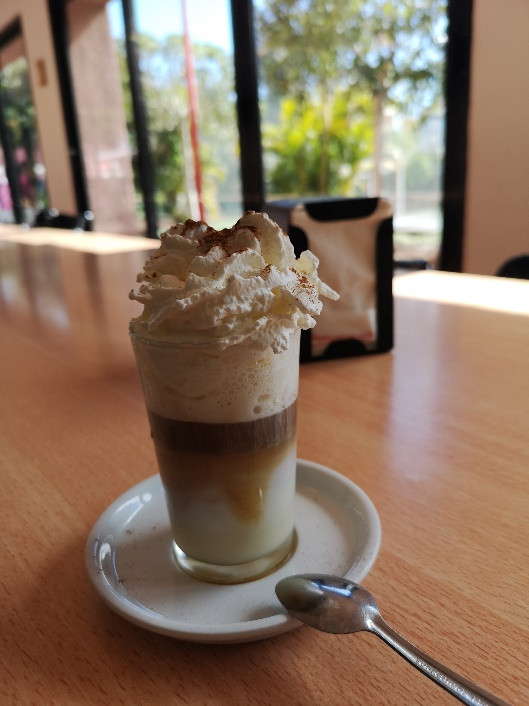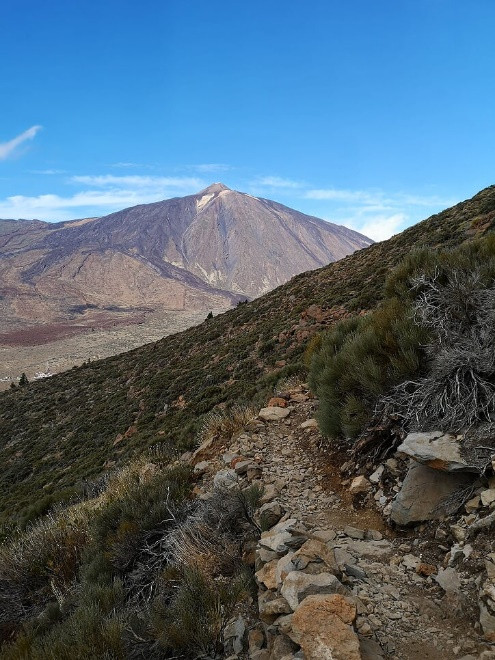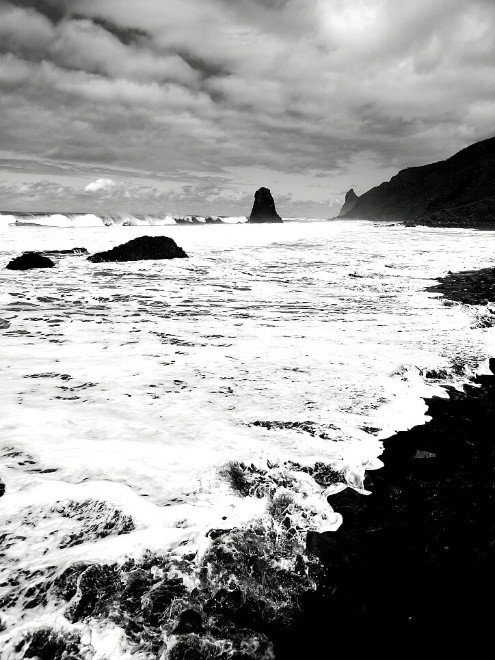
“Barraquito” is likely the most surprising discovery I have made on Tenerife island. The mix of coffee, condensed milk and a liquor is truly exquisite, and a terrific place to have it is of course the famous Instituto de Astrofísica de Canarias in La Laguna, Tenerife, Spain (in short, IAC).
But first, let me introduce myself. I am a computer science post-doc with astronomy and astrophysics background that wanted to make it big in the fabulous field of astrophysics dealing with black holes, galaxies, dark matter, and whatnot. However, fate would have it that I got into the humbler territory of low flying meteors cataclysmically vanishing in the Earth atmosphere. As it turned out, the self-destructing meteors were not so bad a choice after all, and I quickly started to enjoy the science behind it and the small infernal problems that came with them. Thus, I became an associate member of the small-body group on Faculty of Mathematics, Physics and Informatics at Comenius University in Bratislava, Slovakia.
Visiting one of the group seminars, I was introduced to the future plans for an Erasmus+ program for which I could apply. And so, I did. A year after that, I was on a plane bound for Tenerife, and my discovery of barraquito had become inevitable. The Erasmus+ program allows students as well as post-docs to visit some foreign institution or university that participate in this program. This year, my home university was assigned 12 months of foreign visit, and with 4 students applying, we each got 3 months of paid studies. To encourage future explorers, I should probably write that the application is easy to prepare, if there is somebody on the other side who is interested in your work. Moreover, the focus of the stay is to learn something new, and not to produce a ground-breaking paper in some field, so one does not need to question one’s worthiness too much before applying.

Thus, my new home institution became the aforementioned IAC, and my new colleagues became Javier Licandro and Marcel Popescu. Let me say something about what I came to do here and about my experience so far.
Unfortunately, there is no meteor group here, so I joined the next best thing – the asteroid group, which, technically, are just a bit larger rocks than meteoroids flying in the space even smart enough to avoid Earth’s atmosphere and all the collision stuff and needles obliteration. Thus, I ended up observing near Earth asteroids on the MuSCAT2 instrument, which is a 4-color simultaneous camera mounted on the 1.52m mirror Carlos Sanchez Telescope at Teide observatory. Well, in fact, most of the observations had already been done before I came by my colleague Marcel, so what was left for me was data reduction. Maybe you did not know, but most of the modern astronomy is done behind a computer. So much for the romanticism of spending night-time outside watching the stars through a telescope with your eyes. Nowadays, there are cameras everywhere producing a lot of images that then need to be processed. And that became my job. Without going into much detail, I was working on a software that automatized this processing, so that it can be done efficiently and without much effort on the user’s side. Of course, programs that can do this already exist, but they do not always work 100%. My focus was then to identify the problems with the one we had and figure out what can be done about it.

Apart from work, I also had a lot of time to explore the island. As you may have heard, Tenerife hosts 3718m volcano Teide that you can summit either by foot or a cable car. If you care to go up by yourself, you can either start from the base, which is about 2300m up already, or you can go from the ocean, which is of course 0m. Additionally, you can also do good hiking in lower but very nice Anaga or Teno mountains.

Obviously, you also have the option of visiting the sea, which was still pretty warm in October, and take a swim almost everywhere around the whole island. For me, particularly the north shore was interesting because it had bigger waves (Benijo beach on the right image). On the other hand, south shore is calmer and warmer.
During my stay, I also performed some basic maintenance of the Slovak instrument AMOS (for more info about this accomplished Slovak experiment, see these links: link 1, link 2) installed on Tenerife (left image) and neighboring La Palma observatories, so I had an opportunity to visit and walk around some truly nice telescopes ( GTC, right image). I am not going to draw any comparison to Slovak observatory at Modra, lest my boss have something to say to me when I return.

Generally, I can say that my stay here was indeed exceptional. I gained new experience, visited new places, met new people. My return to Slovakia is approaching, but I actually look forward to it. My work here is almost finished, and I look forward to sharing my experience with colleagues at home and continuing the work there to further the Slovak astrophysics as well, also in collaboration with the new colleagues from IAC. I hope this blog motivates you to apply and come here, and don’t forget to have a barraquito!
František Ďuriš, Comenius University in Bratislava
